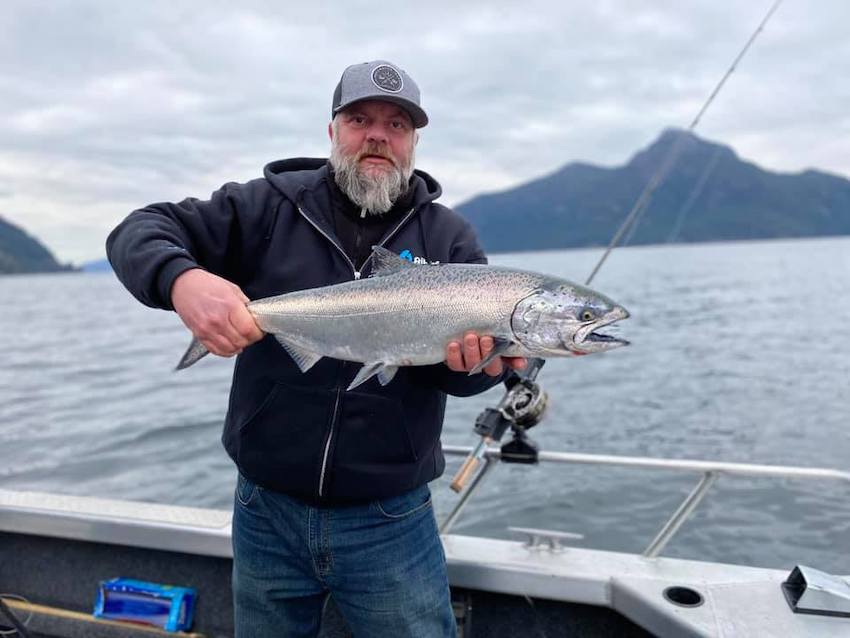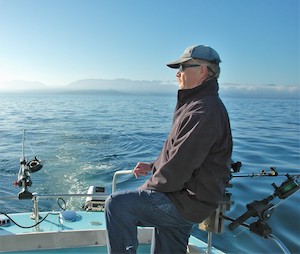
Today’s announcement about 2021’s Chinook salmon fishery is a tragedy for the south coast public Chinook fishery which, for two years, has faced Chinook-non-retention regulations for the bulk of the key spring and summer fishing period. Once again, it finds itself in the same situation.
Sure, the Minister decided to offer some “tails and scales” in a tiny portion of Area 16, but this does little to provide the lifeline that the region needs to sustain any semblance of the most financially valuable and historically important public fishery on the west coast of North America—let alone Canada. How did this happen?
When then Department of Fisheries and Oceans (DFO) Minister Johnathan Wilkinson imposed Chinook-non-retention for the 2019 fishery it came as a shock to the public fishery and public fishery advisors. Since then, fishery representatives have worked diligently with the Department of Fisheries Pacific Region staff to develop fishing proposals for 2020 that would avoid upper Fraser River stocks of concern. These were developed using the most up-to-date data available. Wilkinson’s successor, Bernadette Jordan, rejected those 2020 plans, and in fact, increased the severity of non-retention orders. Prior to the April 2021 season, the previous year’s proposals were revised and fine-tuned. They were reviewed by the Pacific Region DFO staff, and assessed as low risk to stocks of concern.
There has always been concern within the public fishery that regulations were being made based on politics and not data. In spite of this, the SFAB has operated in good faith with the department by developing fishing plans in concert with the DFO, based on the best information available, which in some cases included 40 years of data collection. This concern was so great that the Minister of Fisheries and the Prime Minister were questioned in the House of Commons about this. Prime Minister Trudeau confirmed that fisheries decisions are made based on science.
The public fishery has already received cross-party support from 24 BC members of Parliament and the Provincial government towards achieving the goals of modest access to Chinook, retention of hatchery fish, and marking all Canadian Chinook hatchery production.
Unfortunately, the Prime Minister’s assurances about science-based fisheries management are apparently worthless. There are regions in the 2021 proposals package where not a single bit of evidence for the presence of stocks of concern has been found. Yet these important fishing areas remain closed. There are regions in the 2021 proposal where the percentage of U.S. hatchery-produced Chinook are as high as 70-80% and there is every reason to support the retention of at least one adipose-clipped hatchery-produced Chinook. Yet these areas remain closed.

Hatchery Chinook, photo courtesy Lee Bouthillier
This decision, after a six week wait where businesses and livelihoods have unnecessarily been placed on hold, lacks professionalism by any standard definition of the word. It is incompetent. The current Fisheries Minister is over her head. What is even more disturbing is that the Minister and the Liberal Government have shown complete distain for BC’s public fishery. They can no longer be trusted, and that goes beyond public fisheries, meaning they are no longer worthy of your vote.
Every angler, every public fishery business, everyone whose just thinking about taking their friends and family salmon fishing sometime in the future needs to step up to the plate. Write the Minister of Fisheries, the Prime Minister, the leader of the opposition. Bang on your MP’s door and let them know that this type of fisheries management is unacceptable.
You can reach the office of Bernadette Jordan at Bernadette.Jordan@parl.gc.ca.
The solution is simple, and decades overdue. Flush the deadwood out of DFO’s bureaucracy in Ottawa. It’s time for this type of destructive management to go, starting with this Minister of Fisheries. It’s time for a new Department of Fisheries with positive vision and a “can-do attitude.” It’s time to send the current department of “No Fish and No Fisheries” to the trash heap.
Fisheries and Oceans Canada, DFO Fisheries Notice as below:
That portion of 12-26 north of line from Dinner Point on Village Island (50°37.628’N, 126°30.322’W) across to a point on the opposite shore on Turnour Island (50°37.536’N, 126°29.845’ W); AND east of the Lower Clio RCA boundary line at 50°35.397’N, 126°31.982’W; 50°34.943’N, 126°32.080’W; and That portion of 12-39 northeasterly of a line from Gordon Point on Broughton Island (50°45.885’N, 126°44.158’W) across to the RCA boundary on Eden Island (50°45.510’N, 126°42.831’W); AND those portions of Subarea 12-39 east of the Eden-Bonwick-Midsummer-Swanson Islands RCA:
Effective immediately until 23:59 hours July 14, 2021, one (1) Chinook per day marked or unmarked, with maximum 80 cm size limit on unmarked Chinook.
Area 13 (Portions of Bute Inlet and Ramsay Arm): That portion of Subarea 13-19 northerly of a line that runs from 50°19.584’N, 125°00.292’W (on Raza Island) to 50°19.9463’N, 125°01.9274’W (southeast of Frances Bay); and
Subarea 13-21:
Effective immediately until 23:59 hours July 14, 2021, one (1) Chinook per day marked or unmarked, with maximum 80 cm size limit on unmarked Chinook.
Area 15 (portions of Toba Inlet):
That portion of 15-5 north of a line from Tibbs Point on Raza Island (50°18.731′N 124°57.980′W) to Connis Point on West Redonda Island (50°18.287′N 124°55.177′W); AND northerly of a line from Dean Point on West Redonda Island (50°17.147’N, 124°47.172’W) across to a point on East Redonda Island (50°17.145’N, 124°46.989’W); AND north of a line from Price Point (50°09.399’N, 124°39.165’W) to East Redonda Island (50°10.075’N,124°41.763’W); and
That portion of Subarea 15-6 (in Toba Inlet) west of a line from a boundary sign at Snout Point to a boundary sign on the opposite shore:
Effective immediately until 23:59 hours July 14, 2021, one (1) Chinook per day marked or unmarked, with maximum 80 cm size limit on unmarked Chinook.
Area 16 (portions of Sechelt and Jervis Inlets):
Subareas 16-6, 16-9, 16-12; and
That portion of Subarea 16-7 westerly of the Salmon Inlet RCA boundary following a meridian passing through at 123°43.00’W (near Black Bear Bluff); and
That portion of Subarea 16-8 west of a line from a point on land at 49°41.5’N, 123°48.4’W, across to a point on the other shore at 49°41.1’N, 123°47.7’W; and
That portion of Subarea 16-10 north of a line from a point on land at 49°40.0’N, 124°04.3’W, across to a point on the other shore at 49°40.0’N, 124°05.1’W; and
That portion of Subarea 16-11 north of a line from a point on land at 49°44.99’N, 124°15.57’W, across to Ball Point (corner of the Hardy Island RCA) at 49°45.100’N, 124°13.750’W; and
That portion of Subarea 16-13 south of a line from a point on land at 49°50.7’N, 123°55.2’W then across to a point on the opposite shore at 49°50.2’N, 123°52.9’W; and
Effective immediately until 23:59 hours July 14, 2021, one (1) Chinook per day marked or unmarked, with maximum 80 cm size limit on unmarked Chinook.
Subarea 20-5 (portions of Beecher Bay):
That portion of Subarea 20-5 northerly of a line drawn from 48°19.554’N, 123°37.768’W to 48°19.589’N, 123°36.533’W, then following the shoreline of Frazer Island east to the RCA boundary at 48°19.700’N, 123°36.267’W, then to 48°19.633’N, 123°35.681’W; and
Effective immediately to 23:59 hours July 31, 2021, one (1) Chinook per day hatchery-marked only.
FOR MORE INFORMATION:
Contact the nearest Fisheries and Oceans Canada office or visit our website at http://www.pac.dfo-mpo.gc.ca.

Tom Davis, Island Fisherman Contributing Editor fishing Sooke Area
Island Fisherman Magazine values and respects the voices of our readers and industry professionals. If you’re interested in writing an IFM Op-Ed, please send an email to fish@ifishmag.com.
2 Comments
Leave A Comment
Visit the Store
$34.99
$34.99
Featured Catch

Joel Unickow halibut (Photo: Rob Frawley Lucky Strike Sportfishing Tofino)









It’s now time for 100% of Canadian hatchery Chinook to be adipose fin clipped. That way there is zero reason to stop the public Chinook fishery when only clipped fish are retained. I’m certain money, volunteers and machines would materialize if this method were given the go-ahead. The Americans are doing it and so can we.
Of course proper catch and release education would be needed, but public interest and participation in hatchery programmes would increase as it would directly affect their livelihood and recreational interests.
I truly believe this is the way forward until the wild stocks recover.
The Elephant in the room seems to be aboriginal interests threatening DFO and exercising their weight on Govt. Not unlike the Fraser river issues many years ago.
If not PC to say so but anybody close to this issue know whats up…